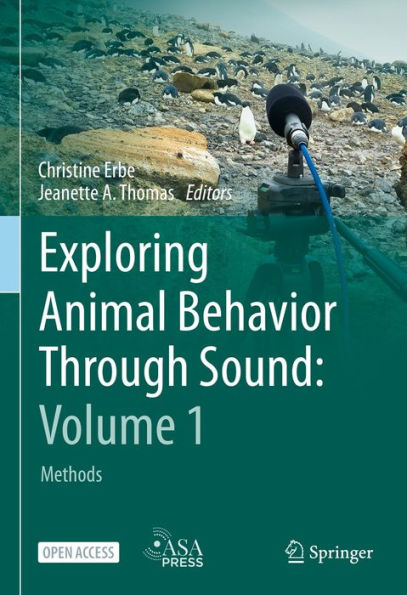This open-access book empowers its readers to explore the acoustic world of animals. By listening to the sounds of nature, we can study animal behavior, distribution, and demographics; their habitat characteristics and needs; and the effects of noise. Sound recording is an efficient and affordable tool, independent of daylight and weather; and recorders may be left in place for many months at a time, continuously collecting data on animals and their environment. This book builds the skills and knowledge necessary to collect and interpret acoustic data from terrestrial and marine environments. Beginning with a history of sound recording, the chapters provide an overview of off-the-shelf recording equipment and analysis tools (including automated signal detectors and statistical methods); audiometric methods; acoustic terminology, quantities, and units; sound propagation in air and under water; soundscapes of terrestrial and marine habitats; animal acoustic and vibrational communication; echolocation; and the effects of noise. This book will be useful to students and researchers of animal ecology who wish to add acoustics to their toolbox, as well as to environmental managers in industry and government.
This open-access book empowers its readers to explore the acoustic world of animals. By listening to the sounds of nature, we can study animal behavior, distribution, and demographics; their habitat characteristics and needs; and the effects of noise. Sound recording is an efficient and affordable tool, independent of daylight and weather; and recorders may be left in place for many months at a time, continuously collecting data on animals and their environment. This book builds the skills and knowledge necessary to collect and interpret acoustic data from terrestrial and marine environments. Beginning with a history of sound recording, the chapters provide an overview of off-the-shelf recording equipment and analysis tools (including automated signal detectors and statistical methods); audiometric methods; acoustic terminology, quantities, and units; sound propagation in air and under water; soundscapes of terrestrial and marine habitats; animal acoustic and vibrational communication; echolocation; and the effects of noise. This book will be useful to students and researchers of animal ecology who wish to add acoustics to their toolbox, as well as to environmental managers in industry and government.

Exploring Animal Behavior Through Sound: Volume 1: Methods

Exploring Animal Behavior Through Sound: Volume 1: Methods
eBook (1st ed. 2022)
Related collections and offers

Product Details
| ISBN-13: | 9783030975401 |
|---|---|
| Publisher: | Springer-Verlag New York, LLC |
| Publication date: | 10/03/2022 |
| Sold by: | Barnes & Noble |
| Format: | eBook |
| File size: | 190 MB |
| Note: | This product may take a few minutes to download. |
